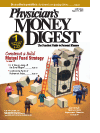Publication
Article
Physician's Money Digest
What's in This Tax Relief Act for You?
Author(s):
The Jobs and Growth TaxRelief Reconciliation Act of2003 is the third-largest taxcut in history, and it promises to effectperhaps the most sweeping changesever for investors. In the 2 weeks afterthe bill was signed, the markets reactedfavorably, with the S&P 500 rising4.5% and the Dow rising above 9000for the first time since August 2002.As you watch the money in motion onWall Street, you may be wondering,"What's in it for me?"
ATTRACTIVE DIVIDENDS
The new law establishes a top taxrate of 15% on qualifying corporatedividends—a significant change consideringthat dividends were previouslytaxed at ordinary income taxrates as high as 38.6% (now 35%).This opens new doors, particularlyfor more conservative individualswho want to pursue income or investmentgrowth on Wall Street.
And even as the new law drawsinvestors to dividend-paying securities,it may also encourage more companiesto offer dividends to shareholders.In the halcyon days of thelate 1990s, dividends were consideredby some to be old-fashioned; manypeople believed that reinvesting profitsto spur growth or buyback stockwould generate a greater payout forshareholders in the end.
But today, in the aftermath of corporatemalfeasance, more shareholdersare seeking the proof of profitabilitythat a tangible dividend can helpprovide. As a result, some companiesare boosting their dividends, whileothers are instituting them for thefirst time. The new dividend taxincentives can only be expected tocontinue fueling the trend.
PROFITABLE CAPITAL GAINS
Also, under the new law the toptax rate on long-term capital gainsrealized on or after May 6, 2003,fell from 20% to 15%, making itless expensive for investors to sellwinners and pocket the gains.Because the new tax rate appliesonly to capital gains on stocks heldfor more than 1 year, shareholdersmay be encouraged to adhere to abuy-and-hold strategy to qualifyfor the lower rate.
The tax cuts on capital gains andqualifying corporate dividends potentiallymake stocks an increasinglyattractive vehicle for investment—and many legislators hopethey will entice investors who tookshelter in cash during the prolongedbear market. If stock values climb,potential gains and tax cuts maywork together to draw timidinvestors back to the markets.
Undoubtedly, the 2003 tax lawoffers valuable opportunities for someinvestors. However, any portfoliochanges prompted by the new taxrates on dividends and capital gainsshould be considered carefully, especiallybecause the rates are set toexpire at the end of 2008 unlessCongress acts to extend them.
Scott J. Kleimanis an independent
advisor with Linsco/Private
Ledger, located in Elkins
Park, Pa. All securities offered
through Linsco/Private Ledger,
member SIPC. Past performance
is no guarantee of future results.The
information presented is the opinion of
Scott Kleiman and not that of Linsco/Private
Ledger. He welcomes questions or comments
at 800-242-1760 or scott.kleiman@lpl.com.
